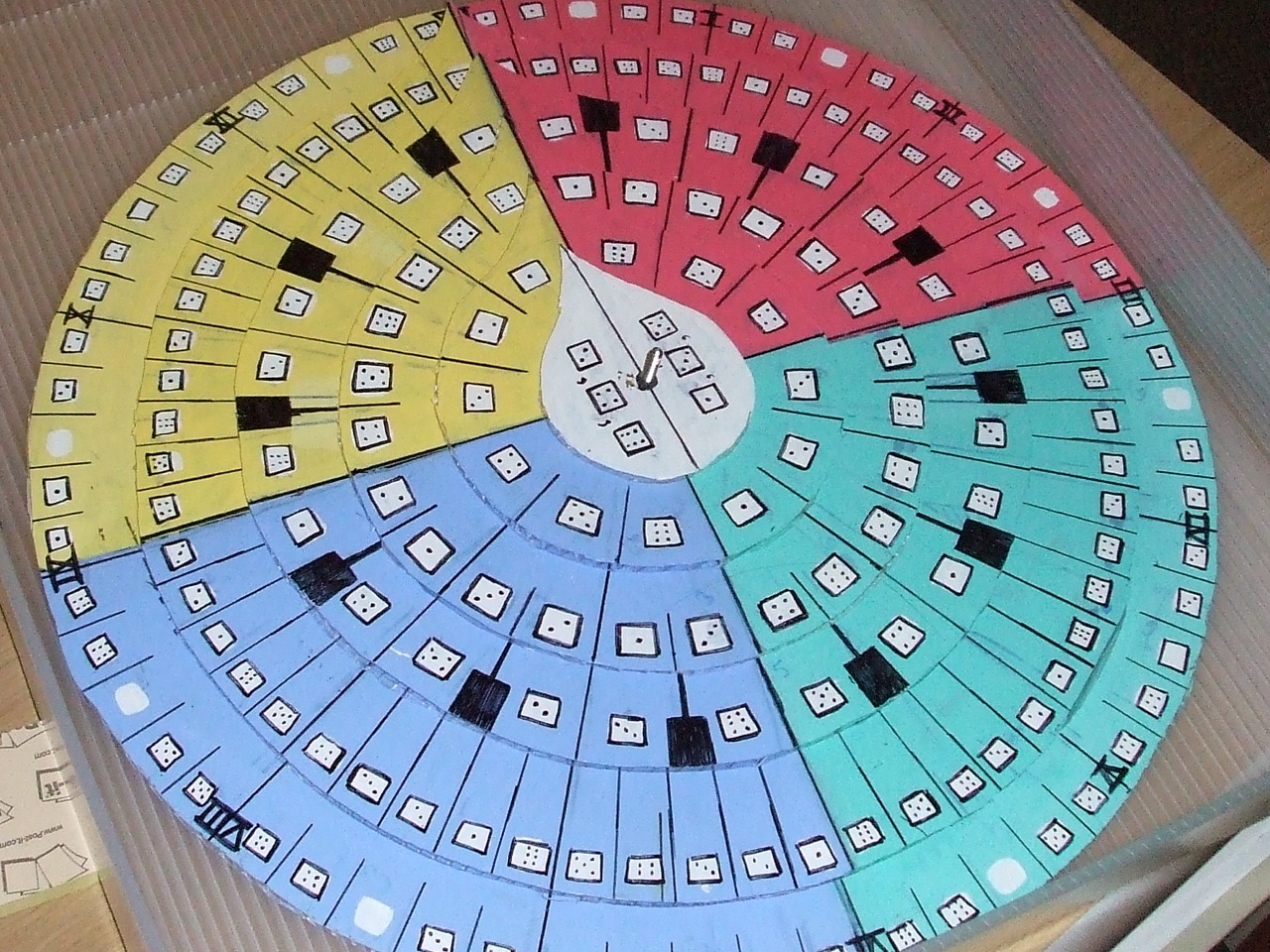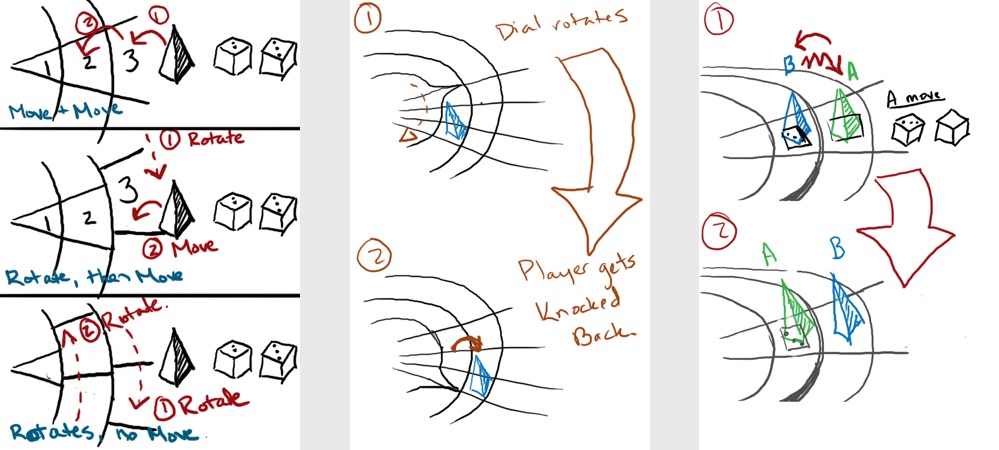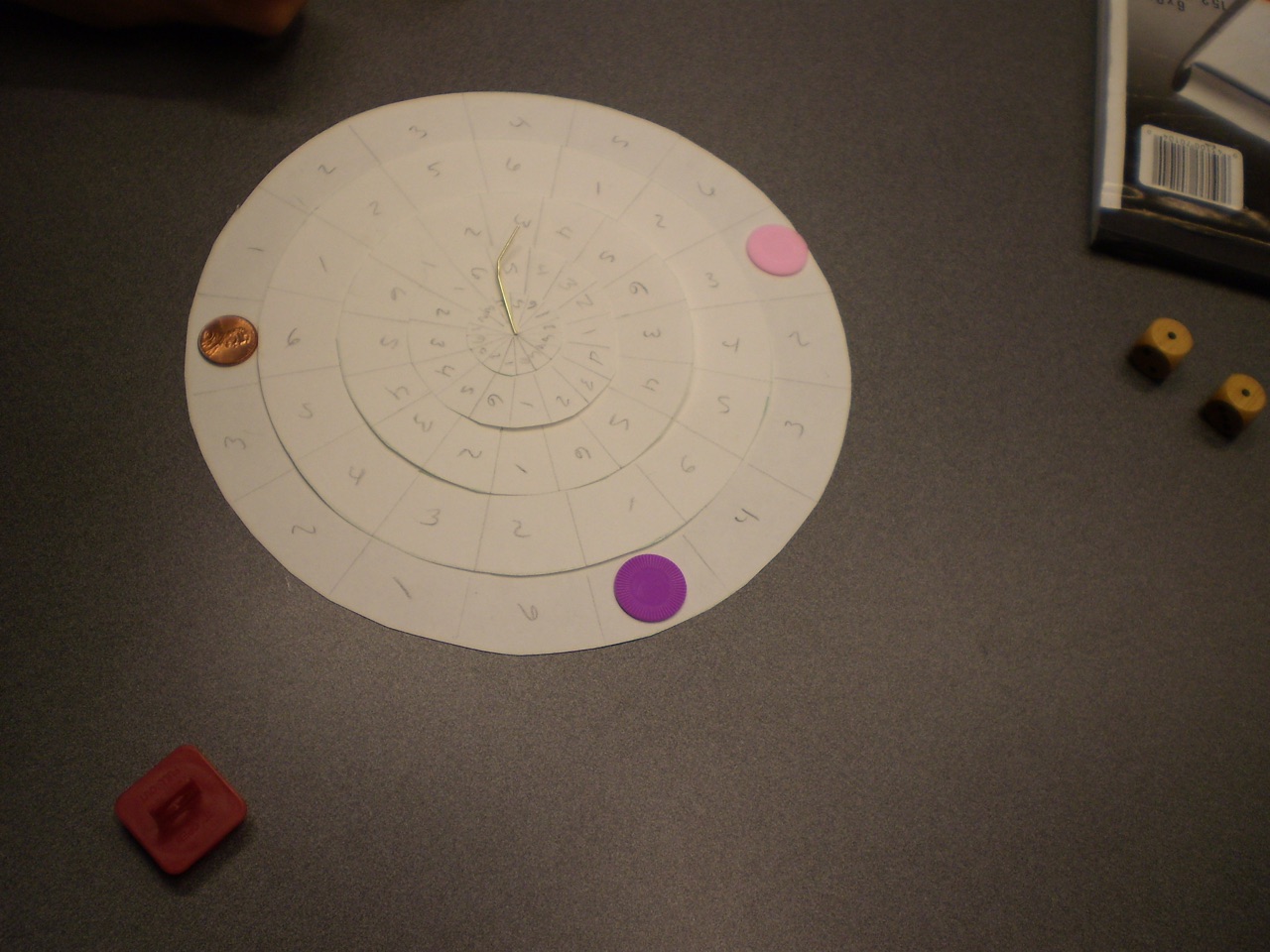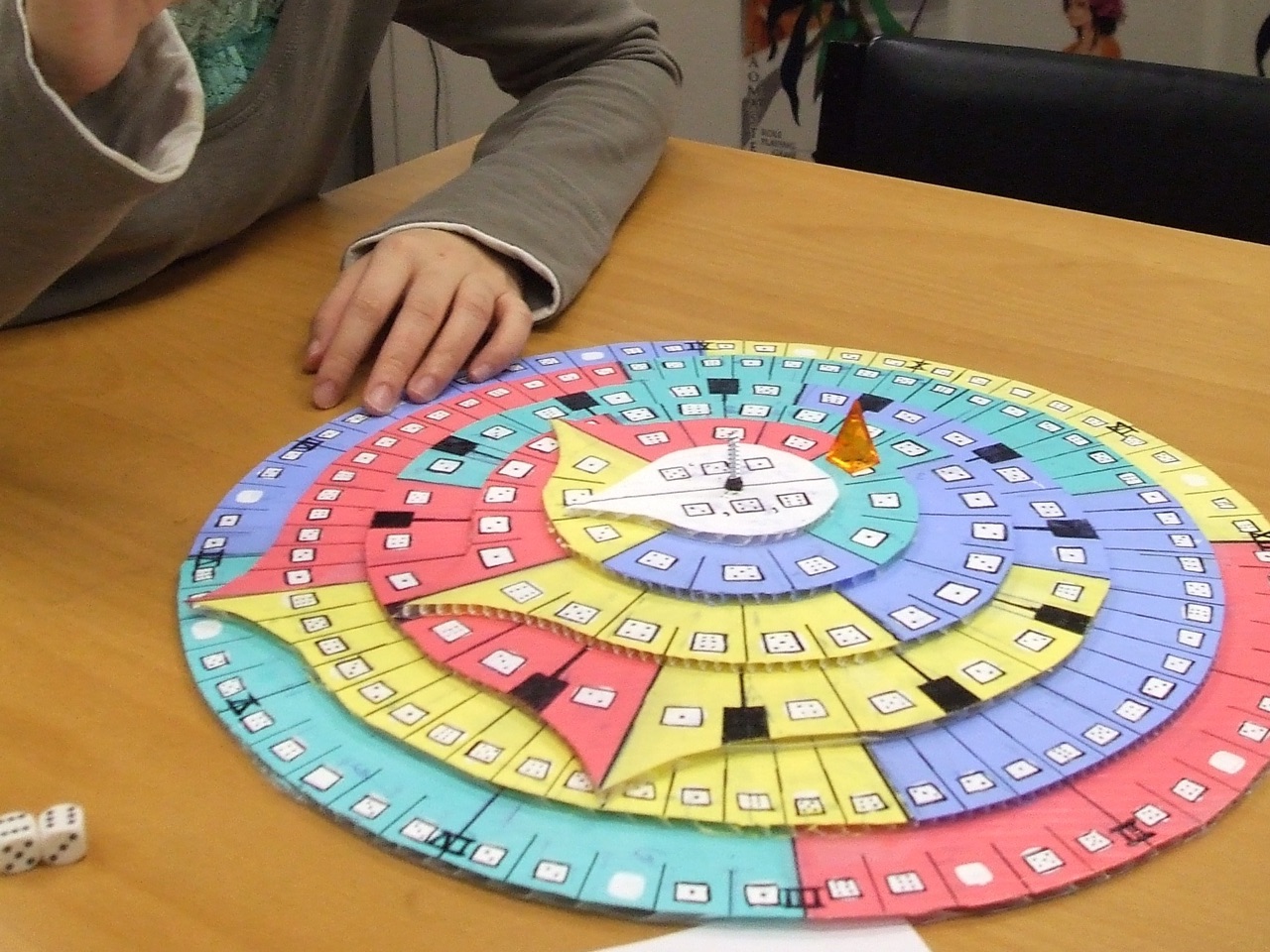Clockworks - Board Game Design
Entertainment Technology Center | 2009
Board Game

About
Clockworks is a board game I created where each turn influences the board game in addition to the players' moves. The objective was to reach the center first by moving your piece up the dials while rotating the disks to knock the opponent players back.
Key Highlights
- Player interactions that influences multiple factors (the players' progression and the opponents' placement)
- Iterative design consisting of prototyping, playtesting, adjusting the prototype, then playtesting again.
Process
Clockworks started out as a paper prototype intending to combine the strategic playstyle of certain boardgames with the random uncontrollable probability of dice. The concept was to create a game where every action had consequences not just to the players themselves, but to their opponents as well. The player would need to think strategically with the options given when making any move.
Playtests played a major role in the development of this game. While the basic ruleset was defined in the initial prototype, playtests were crucial in modifying those rulesets to make the game challenging and fun. Edge case scenarios, for instance (such as what happened when a user rolled doubles), needed explanation on what to do in those situations.

Sketches of some of the basic rules on player movement. Users rolled 2 dice and could choose to use the dice to either jump up to a higher ring if the numbers matched, or rotate the rings to either align their piece to a number or knock another player down to a lower tier
A unique factor to this board game was mobility of the board itself. The roll of the dice determined whether the user could move their piece up towards the center of the clock or rotate the rings. Because the rings turned, there was a lot of difficulty testing the initial paper prototype, due to friction (upper rings would rotate when the user tried to rotate a lower ring). I ended up having to create a higher quality prototype later during the playtesting phase to get past this inconvenience for players and focus feedback on the game's design.

Paper prototype

Stronger prototype made of corrugated plastic. These disks created less friction and could rotate without dragging along upper disks